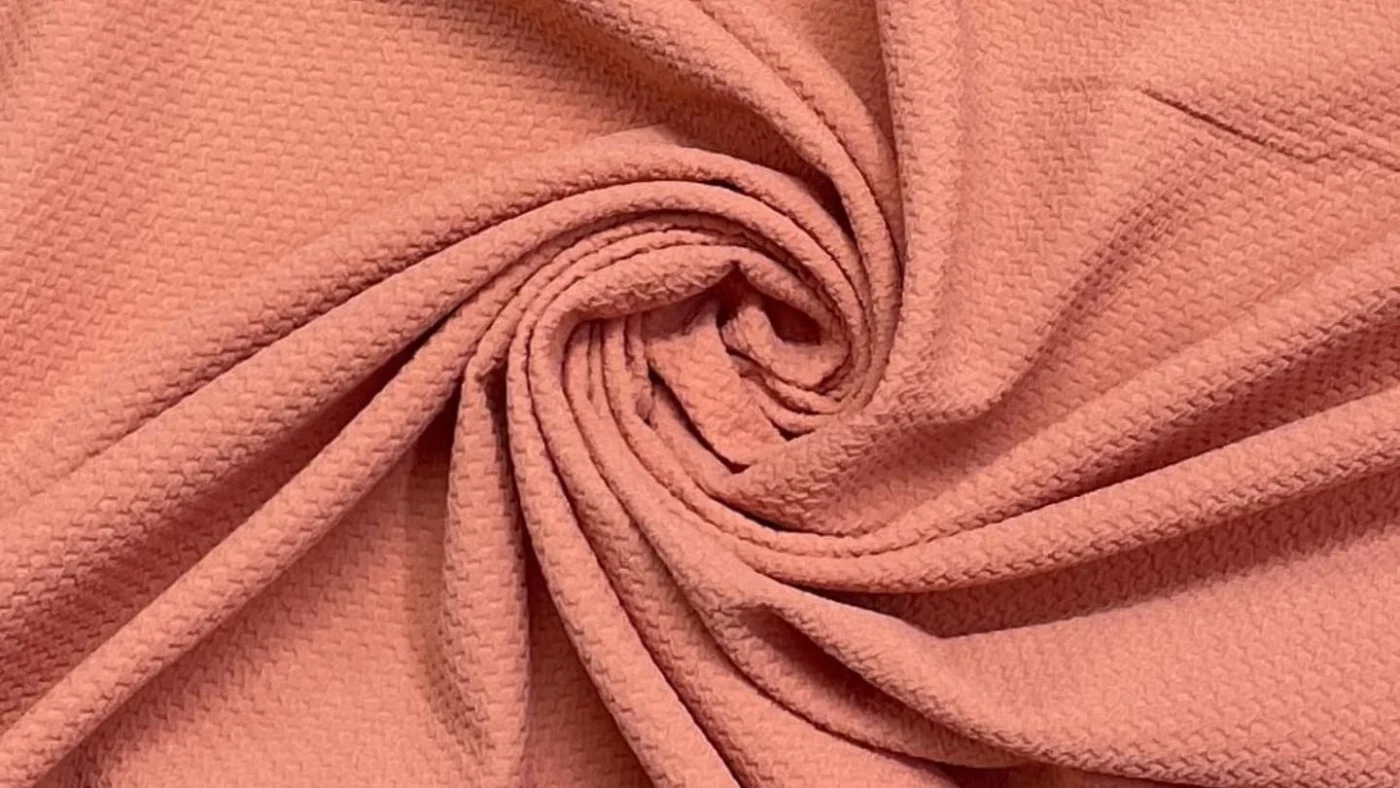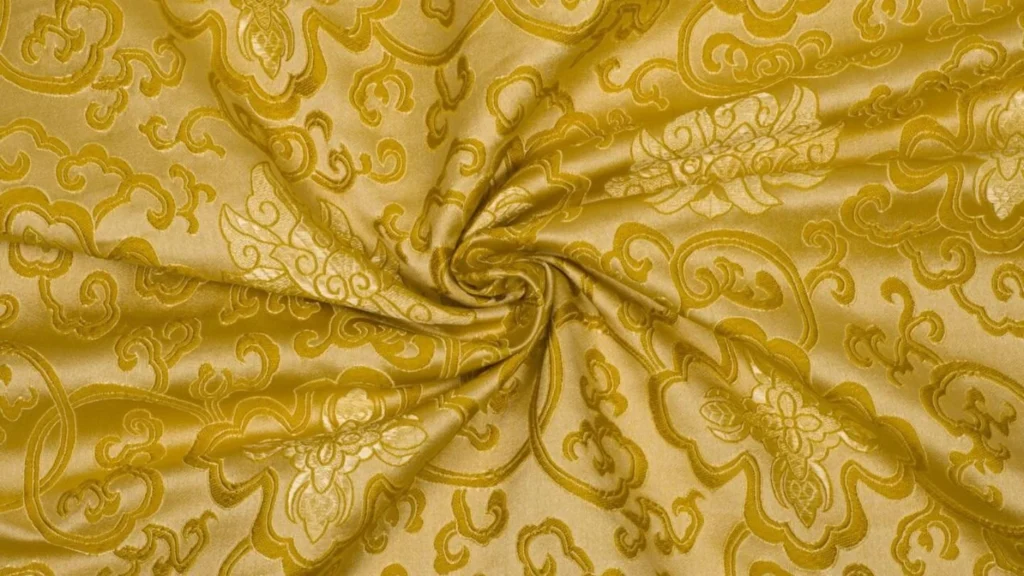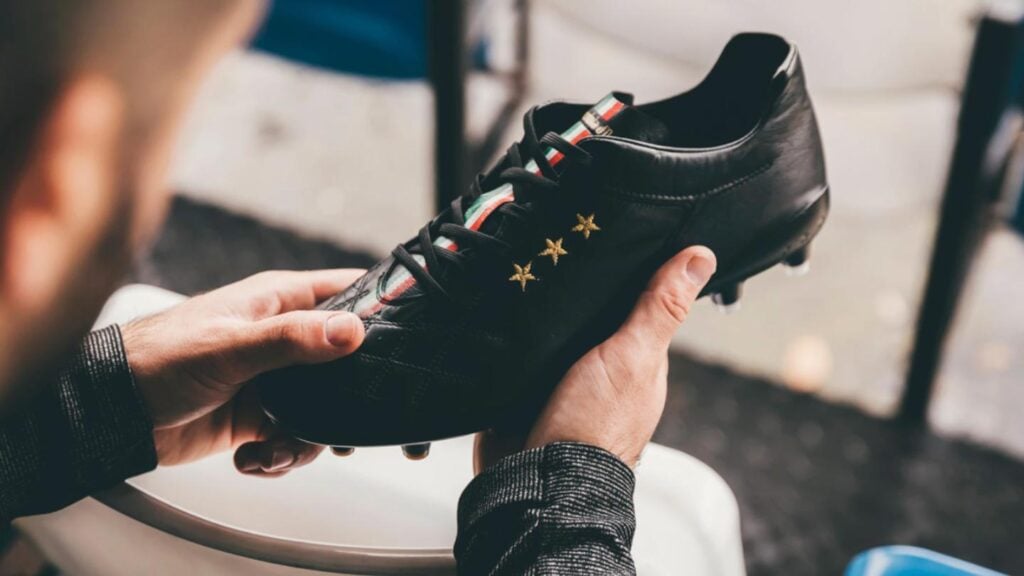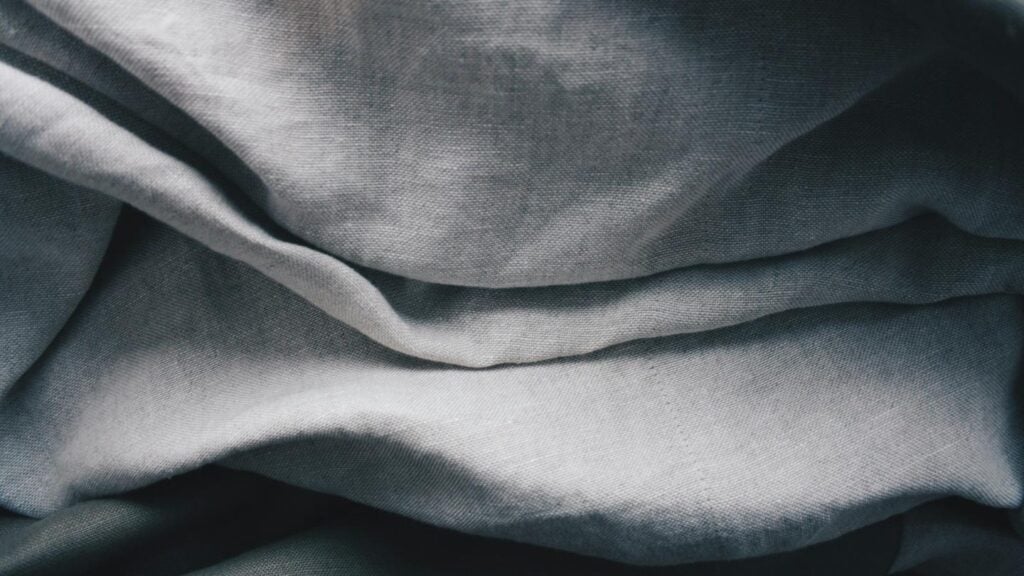2 – Lycra Fabric Composition
3 – Lycra Fabric vs Other Fabrics
4 – How Lycra Fabric Is Manufactured
5 – Common Uses in Fashion
6 – Understanding the Environmental Impact of Lycra Fabric
7 – Exploring Price Points and Value for Money
8 – Conclusion
9 – FAQs
What is Lycra Fabric?
Lycra fabric is a highly versatile, stretchable textile that is widely known for its use in sportswear, activewear, and performance garments. Also known by its brand name, Spandex or Elastane, Lycra fabric is made from synthetic fibers that provide superior stretchability and elasticity. Unlike traditional fabrics, Lycra fabric can stretch up to five times its original size, offering a comfortable fit that moves with the body. This makes it particularly popular for garments like leggings, swimwear, athletic gear, and shapewear.

Key Features of Lycra Fabric:
- Extreme Stretch: The hallmark of Lycra fabric is its ability to stretch significantly without losing its shape. This feature makes it ideal for performance wear and form-fitting garments.
- Elasticity and Comfort: Lycra fabric offers both elasticity and softness, providing comfort and flexibility, which is crucial for active and sports-oriented wear.
- Durability: Lycra fabric is known for its long-lasting nature, resisting pilling, abrasion, and deformation even with frequent use and washing.
- Breathability: Though Lycra is stretchy, it is also breathable, allowing air circulation, making it suitable for use in high-intensity physical activities.
Originally developed in the 1950s by Joseph Shivers at DuPont, Lycra fabric has since revolutionized the textile industry, becoming a key material in fashion and sportswear. Its unique blend of stretch, comfort, and durability makes it a favored choice in modern-day clothing, particularly for items that require both movement and support.
Lycra Fabric Composition
The composition of Lycra fabric plays a crucial role in its stretchability, comfort, and performance. Lycra is a synthetic fiber made primarily from polyurethane. It is a polymer-based material, meaning it is composed of long chains of molecules that provide exceptional elasticity and durability. The fibers used in Lycra fabric are designed to stretch up to five times their original length, yet they maintain their shape and integrity.
Key Components of Lycra Fabric:
- Polyurethane (Elastane)
Lycra fabric is primarily made from polyurethane, a type of elastic polymer. Polyurethane gives Lycra its exceptional stretchability, making it different from many other fabrics. The unique chemical structure of polyurethane enables the fibers to stretch and return to their original shape, providing a perfect fit that adapts to the body’s movement. - Blending with Other Fabrics
Lycra fabric is often blended with other fibers, such as cotton, polyester, and nylon, to improve durability and enhance the comfort of the final product. Blending Lycra with natural fibers like cotton can soften the fabric while still maintaining its elasticity. The blend can also improve the breathability of the fabric, making it suitable for both activewear and casual wear. - Fiber Structure
Lycra fibers are created through a process called spinning, where liquid polyurethane is extruded into fine fibers. These fibers are then woven or knitted into fabric. The structure of Lycra fabric can vary depending on the weaving or knitting technique, but it generally retains the stretch and elasticity that are the fabric’s key features. The fabric can be made into a smooth, shiny surface or a matte texture depending on its intended use. - Dyeing and Finishing
Lycra fabric is also subjected to dyeing and finishing treatments to enhance its appearance and functionality. The dyeing process ensures that Lycra fabric comes in a variety of colors, while finishing treatments can include anti-microbial properties, UV protection, or water-resistant coatings. These treatments increase the versatility and performance of Lycra fabric, making it ideal for use in sportswear and active fashion.
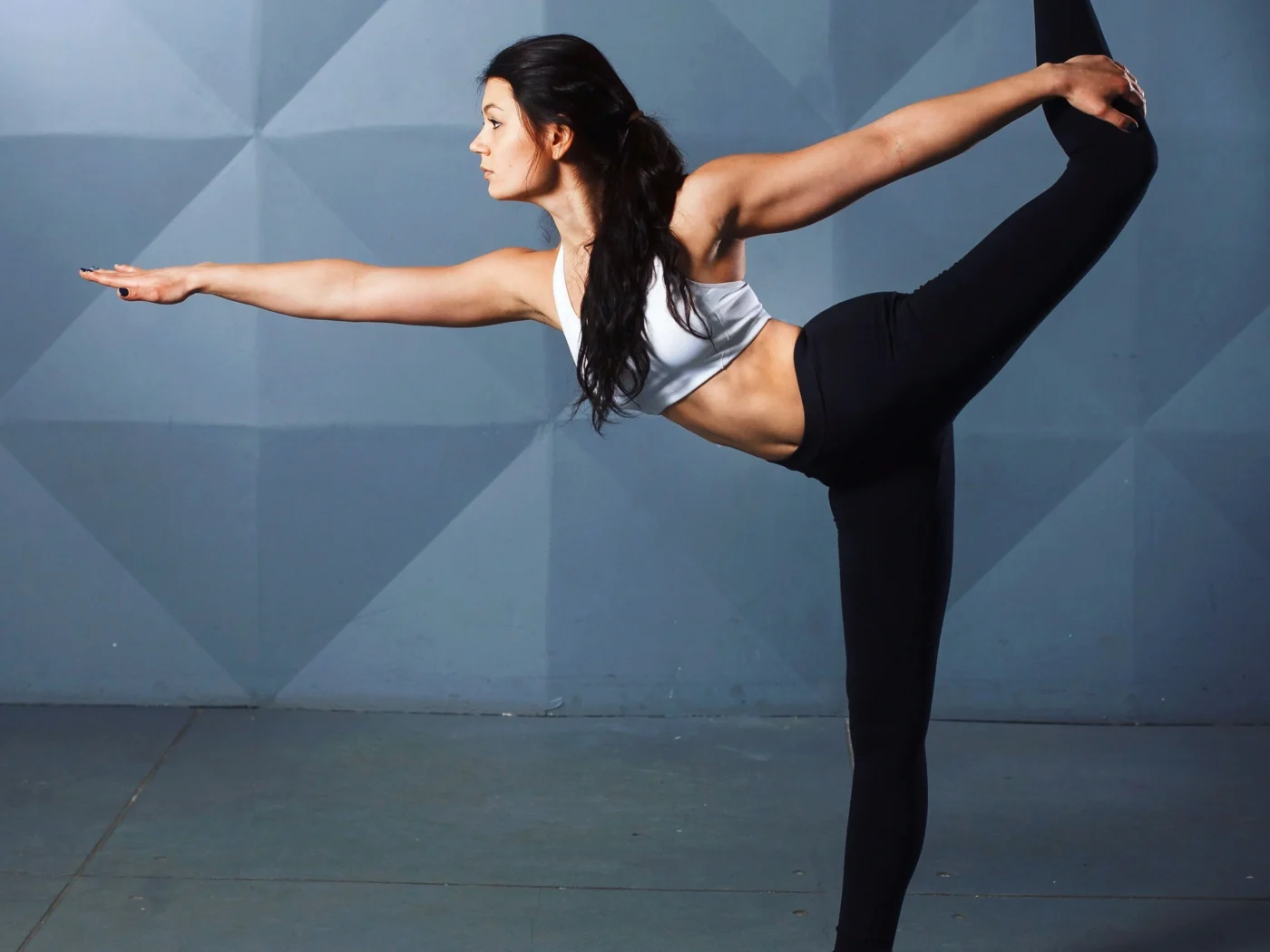
How Composition Affects Performance:
- Stretchability: The polyurethane fibers give Lycra fabric its ability to stretch up to five times its original length, making it ideal for performance wear that requires movement and flexibility.
- Elasticity and Recovery: Lycra fabric maintains its shape due to its elasticity, ensuring that it retains its fit after use and repeated washing.
- Breathability and Comfort: The blended composition of Lycra fabric with natural fibers like cotton enhances its comfort and breathability, making it suitable for high-performance and casual wear.
- Durability: The strength of polyurethane ensures that Lycra fabric is resistant to abrasion, pilling, and stretching out of shape, giving it long-lasting quality.
The composition of Lycra fabric is what makes it an ideal material for high-performance clothing, offering the perfect balance of stretch, comfort, and durability.
Lycra Fabric vs Other Fabrics
Lycra fabric is often compared to other synthetic fibers like spandex, polyester, and nylon, as well as natural fibers such as cotton. Understanding the differences between Lycra fabric and these materials helps highlight its unique qualities and why it is preferred in certain applications, especially in activewear and sportswear.
Lycra Fabric vs Spandex
- Spandex: Often used interchangeably with Lycra, spandex (also known as elastane) is essentially the same material as Lycra fabric. Lycra is actually a brand name for spandex, which is a type of polyurethane-based elastic fiber. Both fabrics offer exceptional stretch and elasticity, but Lycra is generally seen as a premium version of spandex, offering a higher quality finish and greater comfort.
- Key Difference: Lycra fabric is a branded version of spandex and is often blended with other fibers for enhanced performance and luxury, while spandex is more commonly used in basic stretch fabrics.
Lycra Fabric vs Polyester
- Polyester: Polyester is a widely used synthetic fiber known for its strength and resilience. While polyester shares some characteristics with Lycra—such as durability and moisture resistance—it lacks the stretchability that Lycra offers. Polyester is generally stiffer and doesn’t provide the same level of comfort and movement as Lycra fabric.
- Key Difference: Lycra fabric is preferred for activewear and performance clothing because of its elasticity and fit, whereas polyester is better for durability and resistance to wrinkles in everyday garments.
Lycra Fabric vs Nylon
- Nylon: Nylon fabric is another synthetic textile known for its strength and lightness. While Nylon is highly durable and abrasion-resistant, it does not offer the same stretch as Lycra fabric. Nylon is often used in outerwear, luggage, and athletic gear, but it is generally not as form-fitting or elastic as Lycra.
- Key Difference: Lycra fabric has superior stretch and elasticity, making it ideal for garments that require movement and flexibility, while Nylon excels in durability and is better suited for outerwear and gear that demand strength.
Lycra Fabric vs Cotton
- Cotton: Cotton is a natural fiber known for its breathability and softness. While cotton is comfortable and great for casual wear, it lacks the stretch and shape retention that Lycra fabric provides. Cotton absorbs moisture and can feel heavy or damp during intense physical activity, whereas Lycra is designed to wick moisture away and maintain its form-fitting qualities.
- Key Difference: Lycra fabric is far superior in stretch and moisture-wicking abilities, making it ideal for activewear, while cotton is preferred for its natural softness and breathability in casual and summer clothing.
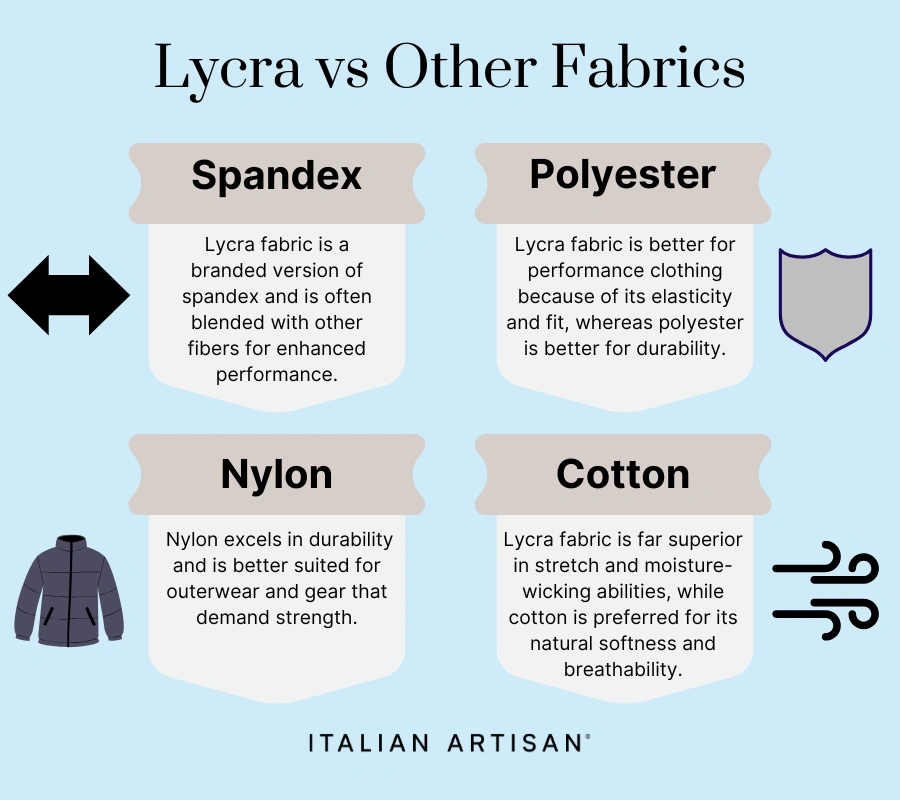
Key Takeaways:
- Lycra fabric offers superior stretchability compared to cotton, which makes it ideal for active or athletic wear.
- Lycra fabric is essentially spandex, offering exceptional elasticity and comfort for performance wear and sports clothing.
- Compared to polyester, Lycra fabric offers greater stretch and a more comfortable fit, but polyester excels in durability and resilience.
- Lycra fabric outperforms Nylon in terms of stretch and flexibility, while Nylon is stronger and more suitable for outerwear.
How Lycra Fabric Is Manufactured
The manufacturing process of Lycra fabric is a combination of chemical engineering and textile technology that results in a material with remarkable stretch, flexibility, and strength. The unique properties of Lycra fabric begin with the creation of the fiber itself and continue through various stages that ensure the fabric performs well under different conditions, from sportswear to fashion.
Key Steps in Manufacturing Lycra Fabric:
- Polymerization
The production of Lycra fabric begins with polymerization, where raw materials such as hexamethylenediamine and adipic acid are chemically combined to form a polyurethane polymer. This polymer is the key ingredient that gives Lycra its exceptional stretch. The resulting polymer is highly elastic, which enables Lycra fabric to stretch up to five times its original length. - Extrusion and Spinning
Once the polymer is created, it is melted and pushed through a machine called a spinneret, which forms the liquid polymer into long, continuous fibers. These fibers are cooled and hardened into spandex or elastane filaments, which are the foundation of Lycra fabric. The fibers are then spun into yarn, ready to be woven or knitted into fabric. - Weaving or Knitting
After the yarn is spun, it is either woven or knitted into fabric. The weaving or knitting process determines the fabric’s final texture and strength. Lycra fabric is often used in stretchable garments like activewear and sportswear, where the elasticity and comfort are essential. The weaving or knitting process ensures that the fabric has enough flexibility and stretch to maintain its shape and provide a snug fit. - Dyeing and Finishing
After the fabric is woven or knitted, dyeing and finishing treatments are applied. Lycra fabric is dyed using various techniques, depending on the desired color and effect. The fabric may also undergo finishing treatments such as anti-microbial coatings, UV protection, or water-repellent finishes, all of which enhance the fabric’s performance. These treatments add functionality to Lycra fabric, making it suitable for a variety of sportswear and outdoor gear applications. - Quality Control
The final step in the manufacturing process is quality control. During this phase, the Lycra fabric is tested for its elasticity, stretch performance, and durability. Any defects in the fabric are corrected, and the final product is inspected for consistency. The high-quality control standards ensure that Lycra fabric maintains its performance characteristics and meets the necessary textile standards for use in fashion and performance wear.

How Manufacturing Impacts Performance:
- Stretch and Elasticity: The polymerization and extrusion processes give Lycra fabric its remarkable stretch and ability to return to its original shape after being stretched.
- Durability and Comfort: The weaving and knitting processes contribute to Lycra’s ability to provide a comfortable fit while retaining its strength over time. This is key for activewear, where fabric needs to move with the body and withstand repeated wear.
- Enhanced Functionality: The finishing treatments applied to Lycra fabric provide additional benefits, such as water resistance and anti-microbial properties, improving its suitability for sportswear and outdoor clothing.
The manufacturing process of Lycra fabric is designed to optimize its stretch, comfort, and performance, ensuring it remains a top choice for sportswear, activewear, and performance textiles.
Produce your fashion collection with us
Common Uses in Fashion
Lycra fabric is a highly versatile material that is widely used across the fashion and textile industries, particularly in activewear, sportswear, and performance apparel. Its exceptional stretch and elasticity make it ideal for garments that require flexibility, comfort, and a form-fitting design. Over the years, Lycra has expanded its role in both high-performance clothing and everyday fashion, becoming a key component in luxury fashion lines and casual wear alike.
Key Uses of Lycra Fabric in Fashion:
- Activewear and Sportswear:
Lycra fabric is most commonly associated with activewear and sportswear, including leggings, yoga pants, gym wear, swimwear, and compression garments. The fabric’s ability to stretch up to five times its original length provides a perfect fit that allows for maximum movement, while its moisture-wicking properties ensure comfort during high-intensity activities. Lycra is also often used in sports bras and running shorts, where flexibility and comfort are essential. - Shapewear and Undergarments:
Due to its elasticity and ability to smooth and contour the body, Lycra fabric is widely used in shapewear and underwear. Brands such as Spanx use Lycra to create garments that offer support and shape without sacrificing comfort. Lycra’s stretchability helps these garments maintain their fit and firmness throughout the day. - Swimwear:
Lycra fabric is a popular choice for swimwear due to its stretch and resistance to chlorine. The fabric retains its shape and elasticity, even after extended exposure to water and sunlight. Swimwear made from Lycra provides a form-fitting, comfortable, and durable option for both professional athletes and casual beachgoers. - Performance Costumes:
Lycra fabric is also used in performance costumes, such as those worn in dance, gymnastics, and theater performances. The fabric’s stretch allows for freedom of movement, which is essential in dance and aerial performances. Additionally, Lycra’s lightweight and form-fitting properties make it ideal for costumes that need to be both comfortable and aesthetically flattering. - Fashion and Luxury Garments:
While Lycra fabric is often associated with sportswear and activewear, it has also found its way into luxury fashion. High-end designers use Lycra blends in clothing items such as dresses, tops, and pants, where the fabric provides a slimmer fit, comfort, and movement. The fabric’s ability to be woven or knitted into a variety of textures allows it to be used in both casual and high-fashion collections.
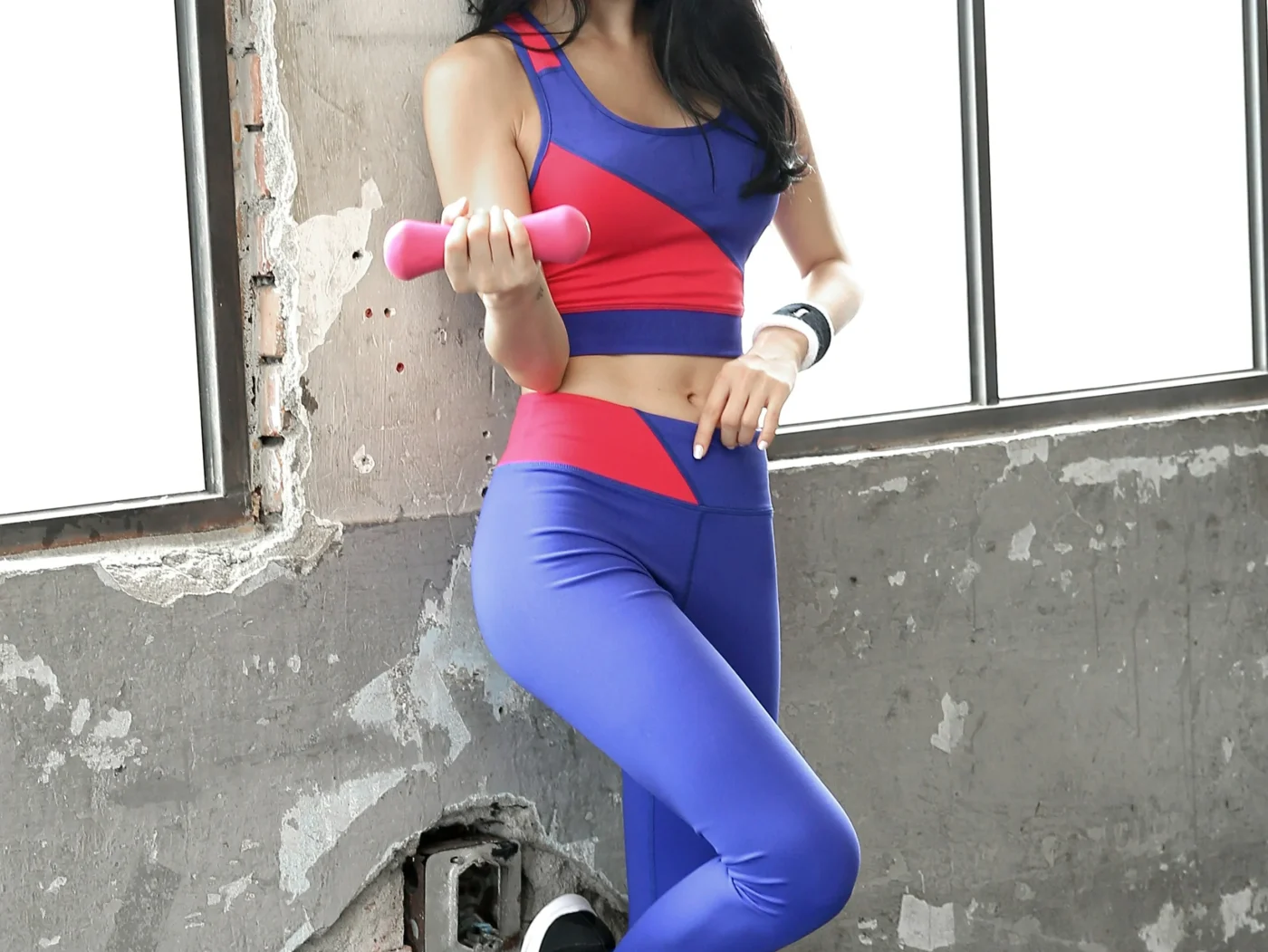
Why Choose Lycra Fabric in Fashion?
- Stretch and Comfort: Lycra fabric is perfect for form-fitting garments due to its stretchability, ensuring comfort and freedom of movement, especially in athletic apparel and performance costumes.
- Durability: Lycra is known for its long-lasting nature, resisting abrasion, pilling, and wear even after frequent use.
- Moisture-Wicking: Lycra fabric is also moisture-wicking, making it ideal for sportswear and swimwear where staying dry is important.
- Versatility: From activewear to luxury garments, Lycra fabric offers versatility in design, comfort, and performance, making it suitable for a wide range of fashion items.
Lycra fabric’s unique properties of elasticity, comfort, and performance make it an essential material in both athletic and luxury fashion. Whether used for activewear, swimwear, or shapewear, it provides style without compromising on functionality.
Understanding the Environmental Impact of Lycra Fabric
While Lycra fabric is known for its remarkable performance and comfort, its environmental impact is an important consideration for eco-conscious consumers. As a synthetic fiber, Lycra fabric shares many of the same environmental challenges faced by other man-made textiles, particularly in terms of resource consumption, waste generation, and biodegradability.
Key Environmental Concerns:
- Non-Biodegradability
One of the primary environmental concerns with Lycra fabric is that it is non-biodegradable. Like other synthetic fabrics, Lycra does not break down naturally in the environment, meaning that garments made from Lycra fabric can contribute to landfill waste. This is a significant issue in the fashion industry, where the rapid turnover of clothing results in increasing amounts of textile waste. - Energy-Intensive Manufacturing
The production of Lycra fabric involves energy-intensive processes. From the polymerization of raw materials to the spinning and weaving of fibers, the energy used in manufacturing Lycra can contribute to a high carbon footprint. Additionally, the extraction of petroleum-based resources required for the production of Lycra fibers contributes to resource depletion and environmental pollution. - Water Consumption
The production of Lycra fabric, like many synthetic fibers, also requires significant water resources, particularly in the dyeing and finishing stages of production. Water-intensive dyeing processes can contribute to water pollution if harmful chemicals are used and not properly treated before being released into the environment. Moreover, excessive water consumption in textile manufacturing is a concern for regions facing water scarcity. - Chemical Treatments and Pollution
Lycra fabric is often treated with chemicals during the dyeing and finishing processes to improve its color, texture, and performance. While these treatments are necessary for enhancing the fabric’s functionality, they can involve the use of toxic chemicals, which may pollute waterways and harm ecosystems if not managed properly. Furthermore, some of these chemicals can be harmful to both workers in the textile industry and consumers.
Sustainable Alternatives and Solutions:
- Recycled Lycra
One of the most significant strides in reducing the environmental impact of Lycra fabric is the development of recycled Lycra. By using recycled materials, such as old garments, fabric scraps, or waste fibers, manufacturers can reduce the reliance on virgin petroleum-based resources. Recycled Lycra fabric helps to lower energy consumption, reduce waste, and minimize the fabric’s environmental footprint. - Eco-Friendly Manufacturing Processes
Many textile manufacturers are exploring more sustainable practices to reduce the environmental impact of Lycra fabric production. For instance, waterless dyeing technologies and the use of biodegradable chemicals in the dyeing and finishing processes are helping to reduce water usage and chemical pollution. Moreover, the rise of closed-loop systems where fabric waste is recycled back into production helps promote a circular economy for textiles. - Sustainable Fiber Alternatives
As the demand for sustainable textiles grows, there is an increasing focus on developing eco-friendly alternatives to traditional Lycra. Some of these innovations include the use of bio-based polymers, derived from renewable resources such as plant-based oils or corn starch, which offer similar performance to Lycra fabric while being more environmentally friendly.

Exploring Price Points and Value for Money
Lycra fabric is a premium material that provides excellent performance, comfort, and durability. While its price point may be higher compared to more common fabrics like cotton or polyester, Lycra fabric offers considerable value for money due to its versatility and long-lasting wear. The cost of Lycra fabric can vary depending on factors such as fiber quality, manufacturing processes, and the end use of the fabric, whether for sportswear, luxury fashion, or activewear.
Key Price Factors:
- Fabric Quality and Type
The quality of Lycra fabric largely depends on whether it is made from virgin Lycra (new, non-recycled material) or recycled Lycra. Virgin Lycra tends to be more expensive because it requires higher energy inputs and petroleum-based resources for production. Recycled Lycra, while still offering excellent stretch and comfort, is usually more affordable and more sustainable. - Brand and Application
The brand and application of Lycra fabric also impact its price. Luxury sportswear brands or high-end performance apparel brands often use premium Lycra fabric in their collections, which raises the price due to the brand reputation and additional features such as UV protection, moisture-wicking, or anti-bacterial treatments. - Manufacturing Process and Additives
The cost of Lycra fabric can also be influenced by the manufacturing process and any additives used during production. For example, waterless dyeing techniques or eco-friendly finishes might increase the production cost. Additionally, Lycra blends (e.g., Lycra-polyester blends) can sometimes increase the price due to the combination of different high-quality fibers.
Value for Money:
- Durability and Longevity:
Lycra fabric is known for its resilience, elasticity, and ability to retain shape, making it a cost-effective investment for items that experience frequent wear. Activewear, swimwear, and performance garments made with Lycra fabric tend to last longer than non-elastic fabrics, giving consumers value over time. - Performance and Comfort:
The superior stretch and moisture-wicking properties of Lycra fabric make it an excellent choice for athletes, gym-goers, and anyone who needs clothing that provides comfort during physical activity. This performance, combined with the fabric’s flexibility and breathability, offers great value in sports and lifestyle apparel. - Versatility:
Lycra fabric’s ability to be used in athletic wear, luxury fashion, shapewear, and swimwear adds to its value. It is a versatile material that performs well across many sectors, making it suitable for consumers who want high-performance garments without sacrificing style or comfort. - Sustainability:
As eco-friendly and recycled Lycra options become more widely available, sustainable Lycra fabrics offer additional value for consumers who are conscious about the environmental impact of their purchases. Recycled Lycra fabric provides affordable performance with a reduced carbon footprint, making it a smart choice for both the environment and the wallet.
Conclusion
Lycra fabric is a highly versatile and durable material, known for its exceptional stretch, comfort, and performance. It is widely used in activewear, sportswear, swimwear, and luxury fashion, providing a perfect fit and flexibility. While it may come at a higher cost than cotton or polyester, the long-lasting durability and comfort make it a great investment. With advancements in recycled Lycra and eco-friendly production, Lycra fabric is also becoming more sustainable, offering both luxury and functionality for eco-conscious consumers.
FAQs
1. What is Lycra fabric?
Lycra fabric is a synthetic fabric made from spandex (elastane) that is known for its exceptional stretch, elasticity, and comfort. It’s widely used in activewear, swimwear, and performance garments.
2. How is Lycra fabric made?
Lycra fabric is produced by polymerizing raw materials into polyurethane, which is then spun into fibers and woven or knitted into fabric. These fibers allow Lycra fabric to stretch and return to its original shape.
3. Is Lycra fabric eco-friendly?
While traditional Lycra fabric is made from petroleum-based materials, there are sustainable alternatives available, such as recycled Lycra. Eco-friendly production methods and waterless dyeing techniques are helping reduce its environmental impact.
4. How does Lycra fabric compare to spandex?
Lycra is a brand name for spandex, so both fabrics are essentially the same. However, Lycra is often considered a premium version of spandex due to its higher quality and comfort.
5. Is Lycra fabric durable?
Yes, Lycra fabric is highly durable. It resists abrasion, pilling, and stretching out of shape, making it ideal for activewear and performance apparel.
6. Can Lycra fabric be used in everyday clothing?
Yes, Lycra fabric is not only used in sportswear but also in luxury fashion, shapewear, and casual wear. It offers a comfortable and form-fitting fit, making it suitable for a wide range of applications.
7. How do I care for Lycra fabric?
Lycra fabric is easy to care for. It should be machine washed in cold water and air-dried. Avoid using fabric softeners as they can affect its moisture-wicking properties.
8. Does Lycra fabric shrink?
Lycra fabric is resistant to shrinking. However, it’s essential to follow proper care instructions to ensure it maintains its stretch and shape over time.
9. Is Lycra fabric expensive?
Lycra fabric can be more expensive than fabrics like cotton or polyester, but it offers great value for money due to its durability, comfort, and performance benefits.
10. How does Lycra fabric compare to polyester?
Lycra fabric offers more stretch and elasticity than polyester, making it ideal for activewear. Polyester, on the other hand, is typically more abrasion-resistant and affordable.

